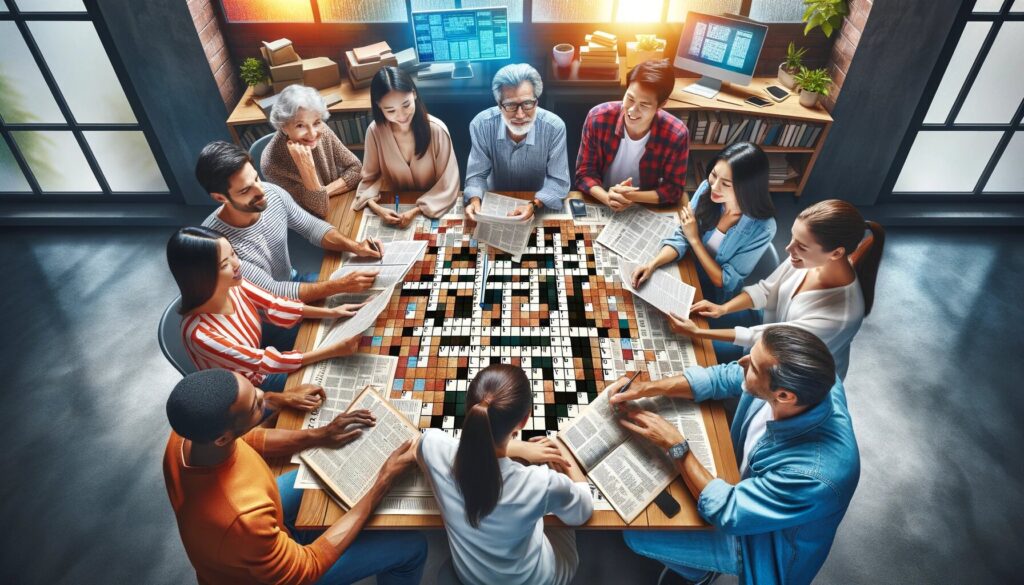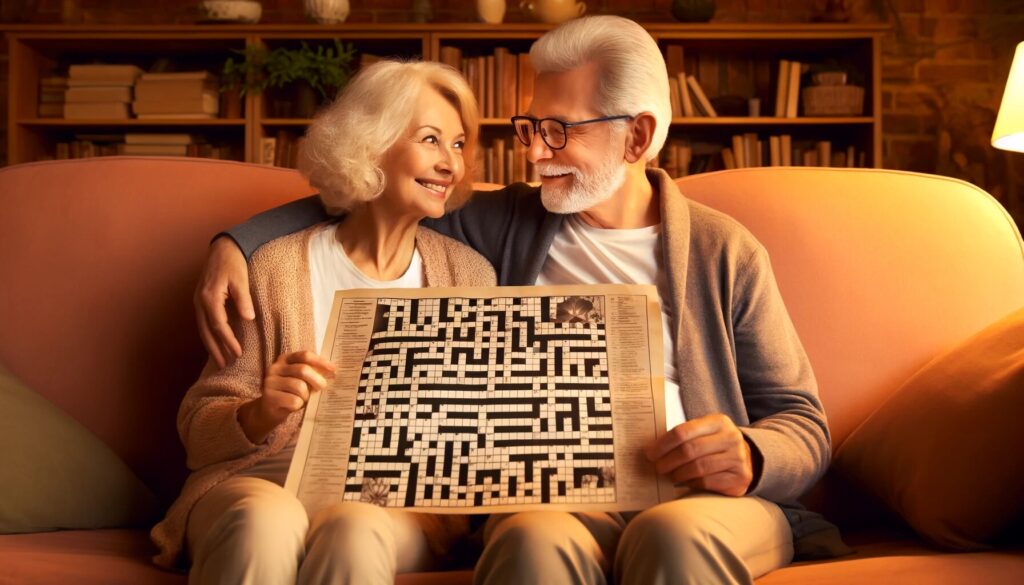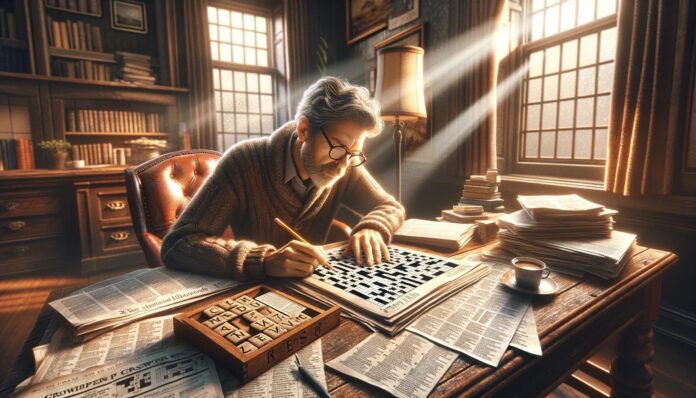The crossword puzzle has kept millions of minds busy, unable to tear themselves away as its complicated, linguistic intrigue, accompanied by the sweetness that comes from solving a problem, all the while working the brain. Their origin goes back to the early 20th century, and these puzzles aim to complete the blank squares on a grid by lettering them to form words or phrases that fit the given clues.
Besides being attached to the entertainment part, these games actually aid in the professional development of skills related to language vocabulary, cognitive abilities, and problem-solving.
A secret of crossword dyss does not lie in its simplicity, which is the opposite. It is the profound depth of knowledge and creativity that is needed to identify and fit the pieces together. In comparing the transformation of crossword puzzles from simple newspaper word games to modern-day ones, we can look at their evolution from newspaper games and crossword apps to competitions held all over the world.
The increasing number of their users makes it clear that they have taken root across societies, regardless of class, age, and background, and their sole currency is the taste for words and puzzles. All of these puzzles are a step-by-step story, a brain fight between the puzzle creator and the solver, at times translating the languages and cultures of that time.
Basics of Crossword Puzzle Structure
The structure of crossword puzzles is fundamental yet infinitely variable. The white and black squares that form the crossword matrix stand at the foundation. Those white squares, placed in rows and columns, are the places for your responses, and the black squares separate words or phrases in one box.
This plan, through guiding the solver step-wise, would also have a nice influence on the way the puzzle looks. The setting for a grid can be either precisely organized and have rotational symmetry, the kind of American grid, for instance, or completely cryptic without symmetry, one sample of which could be the British grid. Each art form comes with specific rules and barriers to execute.
One instance is the fact that a British crossword puzzle will have fewer black squares and clues, which are more obscure and misleading, in contrast to American crossword puzzles, which generally display more black squares and less complicated clues. Providing these intermediate stages is important not only for the final puzzle solving but also for its construction, for it has a huge impact on how tense it is and how the solver should act.
Navigating Clues in Crossword Puzzles
In crossword clues, the words are like the keys that open the door to the correct answers that go in the grid, and they can come with several clue styles and difficulties. A clue can be as easy as just a synonym or a word or as complex as a multi-layered word-playing puzzle involving anagrams, homophones, hidden words, or other types of word games.
Learning the types of clues, i.e., implied/contextual, is a major challenge in this process. For instance, a direct clue gives all its details directly with no symbolic meaning like that of the usual dictionary.
In the same way, with a fill-in-the-blank type of clue, the puzzle solver has to fill out a familiar phrase or proverb. Crossword completion becomes more complicated when the challenge is intimated by the complexity of the clues like those usually found in the New York Times puzzles. For those clues, one has to rely on both a sense of knowledge, linguistic skill, and intuition.
To address this type of clue, the learners are taught to be on the alert for the special words indicating the presence of the answer, stay focused on the tense and part of speech of the supply options, and keep their minds open for solution variants. Succeeded in cracking those cryptograms.
This process does not just give you more fun in the game, but your overall cognitive functions also get better.
Spotlight on NYT Crossword Puzzles: Tradition Meets Innovation
The New York Times crossword puzzle epitomizes the high level of cultural-linguistic challenge and draws characters who the whole planet is proud of. The most popular crossword in the world is the NYT crossword; it has existed since 1942, and today, it is a daily ritual for many people who love challenges and are ready to learn new words and explore themes.
Under the guidance of different editors, starting from the culture-setter Will Shortz to the contemporary trailblazer, the puzzles have evolved from their cozy, humble beginnings into sophisticated riddles and variety that totalify the multilingual alphabet soup and cultural shifts.
Unexpectedly, the hints would comprise snippets of modern slang, phrases, and even unanticipated technological terms, putting the solving group at the mercy of cultural and language changes.
The creativity of NYT crosswords is also manifested in solving special puzzle themes requiring the solvers to think about the layout beyond the two-dimensional grid. Sometimes, interpreting visual components becomes a major part of solving.
This mixing of tradition and innovation guarantees that the puzzles stay consistently challenging and engaging and, at the same time, solidifies The New York Times crossword as an important cultural landmark for word games.
Decoding Lead in to Lingo
The clue “Lead in to lingo” exemplifies the cleverness and layered complexity characteristic of many crossword puzzles, particularly those found in publications like the NYT. This type of clue, known as a wordplay clue, requires solvers to think about words in a flexible and often non-literal manner.
To decode this, one must first understand that “lead in to” suggests a prefix or a word segment that precedes “lingo.” This requires solvers to sift through their mental lexicon of words associated with language or speech. The solution, in this case, could be “intro,” as in “introduction to the lingo,” demonstrating how crossword clues can play with language, using prefixes, suffixes, and other linguistic elements to lead solvers to the answer.
Analyzing such clues involves a mix of linguistic knowledge, intuition, and sometimes a bit of research, offering a profound sense of achievement upon uncovering the correct answer.

Strategies for Success
The way the words are combined in cooking crossword puzzles is an essential part of crossword design art; it adds an interesting layer of difficulty and enjoyment that can challenge and amuse solvers very well. When encountering wordplay clues, one will need to figure out the purpose of different linguistic tricks, as revealed in anagrams, reversals, homophones, and containers.
An anagram (when the letters of a word or expression must be jumbled up to create the solution) is an example of one clue type. Spotting indicators of symbolism, such as “thrown together,” “broken,” or “mixed,” can help participants define the joking playing around.
We talked about the importance of problem-solving by developing the habit of recognizing these patterns, which eventually helps to speed up clue identification.
Also, being in a position to increase one’s vocabulary by interacting with the various crossword puzzles can boost the cracking potential of, in most cases, tricky and amusing clues.
Components of the “Lead in to Lingo” Clue
To further dissect the “Lead in to lingo” clue, let’s break it down into its components. The phrase “lead in to” suggests an introductory component or a precursor, while “lingo” refers to a particular type of language or jargon.
This structure of the clue directs the solver to consider words that could literally or metaphorically lead to a kind of language. The correct answer, “intro,” fits neatly as it abbreviates “introduction,” effectively leading into the concept of language or lingo. Understanding this clue’s components involves recognizing the linguistic function each part plays and how they interact to form the answer.
Solvers improve at these interpretations through repeated exposure to similar clues, gradually developing an intuitive sense of the common structures and tricks used in crossword puzzles.
Exploring Language and Context
When faced with a complex crossword clue like “Lead in to the lingo,” brainstorming becomes a vital strategy. This process involves thinking broadly about all possible interpretations of the clue components and their relationships. Solvers might consider synonyms for “lead in,” such as “start,” “begin,” or “intro,” and for “lingo,” like “language,” “dialect,” or “jargon.”
This exploration of language allows solvers to widen their scope of potential answers, testing each against the clue until finding a fit that satisfies both the literal and contextual meanings. Additionally, considering the puzzle’s overall theme or any related clues can provide additional context that narrows down the possibilities, making the brainstorming process more directed and efficient.
Strategic Solutions
Even though crossword puzzles need the reward of a good lexicon, as in playing chess, you need to think critically. One of the solutions is the process of elimination, in which we gradually reject answers that don’t fit the given parameters so that the appropriate one can be seen.
There is one additional way of designing the crossword, and that is by the heavy addition of crossword-solving tools such as thesaurus and crossword solvers app that give hints or itemize the answers for a solver that is stuck.
Moreover, the capacity of teamwork to have an impact cannot be overestimated. As you discuss the puzzle with your fellow puzzle mates, you not only share different perspectives and insights that you may not have seen alone but also generate creativity.
The last piece of advice will be to understand the typical structures and common themes most puzzle creators have and use these details to take advantage of the fact that they almost never break their schemes.
Many constructors are sticklers to their types of clue or theme preferences. Over time, solvers can develop a familiarity with these patterns, improving their efficiency and success rates in solving crossword puzzles.
Essential Tips for Crossword Enthusiasts
We are in thick an atmosphere that making a strong vocabulary is non-negotiable for lovers of crossword puzzles. By designating time to read from different genres and subjects, one suggests new words and phrases to an extensive vocabulary that may be needed to crack complex puzzles.
Vocabulary-increasing resources like word-of-the-day apps, literary newsletters subscriptions or engaging with language learning platforms to enrich the wealth of one’s verbal bank denominations is also among the important factors.
Another useful way of enlarging is by creating one’s dictionaries with odd terms or flash cards for the constant refreshment of knowledge of such kind, which may occur most often in crosswords. Further, playing word games like Scrabble or competing in a spelling bee is another manner of being skillful in word vocabulary, and the game makes it more competitive.
Learning vocabulary is one of the fundamental skills of crossword solving. This process not only helps solve the crossword puzzle but also has a positive impact on linguistic and cognitive communication abilities.

Creative Thinking in Crosswords
Creative thinking is crucial when approaching complex crossword puzzles. This involves looking beyond the obvious or first impressions of clues and considering alternative meanings or unusual interpretations. Techniques to enhance creative thinking include:
- Reversing word orders.
- Thinking of words that could fit both as verbs and nouns.
- Considering cultural, historical, or contextual references that may take time to be apparent.
Solvers should also be open to using hints or partial answers from other filled-in words to spur new ideas for unsolved clues. Keeping a curious and open mind without too much fixation on a single interpretation can lead to breakthroughs in solving. Additionally, setting puzzles aside to return to them later can provide fresh perspectives and renewed insight, making creative solutions more apparent.
Techniques to Improve Your Skills
Practice is fundamental in mastering crossword puzzles. Regular engagement with different types of puzzles—from daily newspapers to online platforms—ensures consistent exposure to various clue types and solving techniques. Timing oneself can also help in building speed and efficiency, turning puzzle-solving into both a brain exercise and a competitive challenge against oneself.
Additionally, reviewing solved puzzles to understand the rationale behind each answer can be incredibly educational. Many crossword aficionados benefit from participating in puzzle clubs or online forums where they can solve collaboratively and share strategies.
Such communities not only provide support and motivation but also deepen one’s appreciation and understanding of the art and complexity of crossword construction.
Resources and Tools for Crossword Lovers
In addition, crosswords can be leveraged further, as many resources and tools are available to deepen engagement. Digital modes, e.g., online tournaments aiming to discover the best crossword performers in the American Crossword Puzzle Tournament, offer a range of contest options.
In contrast, sites dedicated to puzzle theory and construction can provide in-depth information on the art of assembling these fixtures. For instance, crossword dogmas can assist in solving puzzles that are cryptically difficult through the use of hints, providing devices, and solving clue databases.
In addition to this, interconnection with the worldwide crosswords society through essays, podcasts, and social media platforms can also be instrumental in enlarging one’s knowledge and the heightened satisfaction of doing the puzzle-solving process.
Likewise, experienced puzzlers often suggest maintaining a puzzle journal where solving-related information, including breakthrough implications and strategies, is written down. Such a tool can be a very effective way of monitoring performance and making progress.
The Art of Wordplay in Puzzles
It’s the superb prose of the puzzle that makes beats many crosswords, thus subordinating wit, experience, and cleverness to a solver’s expertise. The ability of a solver to understand and get the nuances of many types of wordplay is an attribute that is exhibited among those who can navigate through the most baffling of clues. Here, you need to identify the puns, anagrams, homophones, and other linguistic devices to which a crossword constructor frequently applies.
To develop this ability, solvers are brought up to speed by getting them to read various authors widely and diversely. This will help them recognize where many language patterns and cultural references appear in puzzles.
Furthermore, performing word-related games that practice rearranging and producing words is also useful to help people think beyond the literal meanings while also identifying various methods of using words.
Using books for crossword puzzle enthusiasts that focus on wordplay can be highly beneficial, as they allow us to both practice directly and learn why we make mistakes, thus leading to faster and more accurate solving.
Conclusion
Puzzles help not only relieve stress or feeling bored but also significantly affect the formation of the brain and capabilities. They advance vocabulary, provide for efficient spelling practice, develop problem-solving skills, and provide for the general maintenance of cognition.
While some believe that doing crossword puzzles is limited to recall, pattern recognition, and critical thinking, all of which have an impact on cognitive health, others propose that many other activities are more necessary for the healthy life of the brain.

Additionally, being so, namely the communal aspect one shares when trying to guess clues with friends or taking part in online forums, adds an extra socialization and learning side to the experience that can also be very rewarding. Along with the complexity and the delight of crossword puzzling, we realize that they are more than mere games.
They are actually the celebration of language and an affirmation of our human passion for puzzles. Crossword puzzling can be seen as crossword puzzling, which means that no matter whether you are a beginner or a pro, the crossword world is wide and deep, carrying different tasks and achievements that will certainly take your time and improve your patience.
FAQ’s About Lead in to Lingo
What are the best strategies for beginners to improve at solving crossword puzzles?
Answer: Beginners should start with simpler puzzles to build confidence. Regular practice, learning common crossword terms, and using a dictionary can help improve skills. It’s also useful to study solved puzzles to understand how clues and answers align.
Can solving crossword puzzles really help improve my vocabulary?
Answer: Absolutely! Crossword puzzles frequently introduce solvers to new words and phrases. Regularly engaging with crosswords can significantly expand your vocabulary and deepen your understanding of language nuances.
What is the difference between American-style and British-style crosswords?
Answer: American-style crosswords typically have a higher proportion of shaded squares, straightforward clues, and a focus on general knowledge and wordplay. British-style crosswords, often called cryptic crosswords, involve more complex clues that use anagrams, homophones, and hidden meanings.
How often should I do crossword puzzles to see a cognitive benefit?
Answer: Studies suggest that regular cognitive activities like crossword puzzles can help maintain brain function. Engaging in crossword puzzles several times a week can be beneficial, but even daily puzzles can be advantageous for those who enjoy them.
Where can I find quality crossword puzzles to solve?
Answer: Quality crossword puzzles are available in many daily newspapers, both in print and online. Additionally, there are several websites and mobile apps dedicated to crossword puzzles, offering a range of difficulties and styles.



